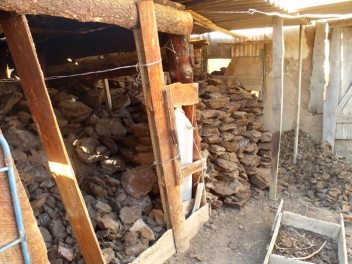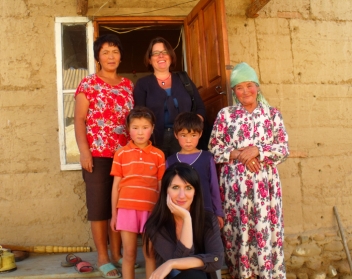 In preparation for visiting Kyrgyzstan I had read about HelpAge International’s work in the area, especially in reference to how older people survive the harsh winters and have to burn cow dung as fuel.
In preparation for visiting Kyrgyzstan I had read about HelpAge International’s work in the area, especially in reference to how older people survive the harsh winters and have to burn cow dung as fuel.
No fuel, no heat
When I was taken to see an older women’s home, I noticed the enormous stockpile of cow pats piled up in the outdoor yard.
It seems an enormous amount, but when you realise that a large sack of cow dung only lasts a few hours I could see this wasn’t near enough to last the long cold winters where temperatures can drop to -30 degrees.
Cow dung patties made by village women are used as fuel while cooking when wood is scarce. The dung is dried and shaped into patties which are then burnt to produce heat. However, most cooking stoves are inefficient in producing heat from the cow dung.
Longer and colder winters
 The older woman I met had to spend her meagre pension on fuel and clothes for winter. She had a very small vegetable patch but the diet in winter for herself and her two grandchildren is mostly reduced to bread and tea.
The older woman I met had to spend her meagre pension on fuel and clothes for winter. She had a very small vegetable patch but the diet in winter for herself and her two grandchildren is mostly reduced to bread and tea.
In addition, the house had no insulation and part of the roof was open to the air.
I wondered how this family will keep warm in the winter. In addition, global climate change could result not only in warmer summers over the long term but also colder winters, according to some climate models. This means that older people in Kyrgyzstan may need to survive even longer and colder winters.
A potential solution?
I read about an energy efficient cooking stove that has been designed to make the cow dung give off larger amounts of heat. The devices operate on the basis of maximising the surface area of the dung and blowing in more air.
Efficient combustion takes place as more air is blown into the stove thus minimising the formation of CO gases. I wonder if this is something we should be investigating further in the future?
Read more about HelpAge’s work on climate change and Kyrgyzstan
